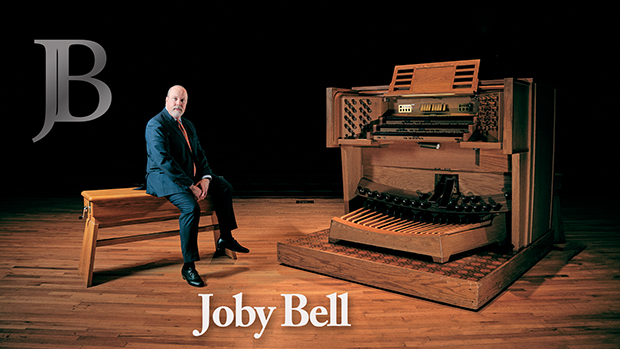Franck-ly speaking, Part II: Prelude, Fugue, and Variation
 Sunday, September 28, 2014 at 9:00PM
Sunday, September 28, 2014 at 9:00PM
This is the second installment in a series on my take on playing the twelve large works of César Franck. Today we look at the Prelude, Fugue, and Variation. See the first post in the series for background information.
***********************
The title is problematic. Not only is there only one Variation (not Variations), but also the use of the Oxford comma gives some of us fits. Against my usual punctuation morality, I insert the extra comma just to show the three sections at a glance. The original edition cleverly gets around this with the title “Prélude, Fugue, Variation,” omitting et [and]. I don’t recall as of this writing what Franck called it in his manuscript/autograph. The later Durand edition says, “Prélude, Fugue et Variation” (no Oxford comma). Anything is possible, and I’m over it. All I'll ask is that when printing the title, stay in one language: use the accent in Prélude with the French conjunction et, or use no accent with the English and. I’ll stay in English below:
The truncated version which omits the Fugue is a bastardization and should never be used in public. The original piece is a complete whole, for heaven’s sake. The interlude alludes to the Fugue subject, so it makes no sense to play the interlude without the Fugue attached. And it makes no sense to play the Prelude by itself, because it ends in the wrong key. So about the only excerpt-able section is the Variation itself, which is hard to play, in which case you might as well learn the whole thing.
The Prelude and the Variation are trios. The left hand spends a lot of time in the alto range, and the feet spend a lot of time making surgical little movements from note to note in the tenor range. The whole body is put into traction to play this piece, and there are just too many pitfalls to be checking music AND feet AND hands. If one of those gets derailed, the others are likely to follow. Therefore, this is one of those pieces that will go better if it is memorized (and well).
Throughout the Prelude and the Variation, play the melody and make the accompaniment fit around that. The most common error I hear is the left hand rushing into the second eighth note of each beat, following the rest. Once that is under control, the piece flows quite naturally beautifully. Sometimes I think it’s silly to hear a different instrument in your head when you play a melody on the organ, but in this case it works: pretend you’re an actual oboist, and the melody will speak for itself. First eighth of each beat stronger than the other two eighths.
Measure 10: obviously, the right foot needs to make the crescendo in this measure, rather than lunge for the box AND high B at the same time for measure 11. You can hear that panic every time otherwise, so just take care of the box earlier. This applies to the other similar spots throughout (31, 156, etc.). Remember that Franck’s organ had the box lever placed all the way to the right, which means that he could have (but did not necessarily have) had someone moving the box for him. Franck was known to have said that you should play as many pedal notes as possible with the left foot so that the right could operate the box. But myself, I sacrifice neither notes nor their legato for anything. So I work out some box movements at other times as required to preserve line and legato. Throughout Prelude and Variation, only slight box movements need be used; just enough to hear a difference is plenty.
Throughout Prelude and Variation, obey Franck’s every rhythmic command. He built the breaths into it, so don’t cheat the breathing voices. And don’t hold left-hand notes into rests. Keep it clean.
Measures 39-42: it is suddenly about the pedal, so let that melody rule the rhythmic motion of everything else. The same goes for 177-180.
Measures 51-59: the interlude is just an interlude. Don’t make it an event. Notice that it alludes to the Fugue subject, so make it sound that way. And notice that the fermatas have been placed on notes, not on rests, so don’t go out for coffee during the rests.
Fugue subject: I cheat a little by making a slight(!) break after the half notes in measures 64 and 65 and all other similar passages in other voices (72, 73, 82, 83, etc.) throughout the fugue. Such is (barely) legal in Franck – don’t forget that he was developing organ playing from ordinary touch into legato, but that did not fully arrive until Widor and later. So don’t arrest me.
Measures 117-122: fingering here will be unorthodox to many. Don’t be lazy – work out a legato fingering. It is possible.
Measure 128: I decrescendo here. I love that arrival on the Picardy.
Make the Variation flow. Again, make that left hand obey the rhythmic wishes of the melody. Yes, I know that 162-169 is difficult for the left hand. Tough! Learn it cold and make it fit.
This is one of those pieces that is beautiful to the ear but horribly awkward to play. Go with making it sound good; never telegraph how difficult it is. Sit up straight, and refuse to lunge for any note or swell shoe in a panic.
 Joby Bell | tagged
Joby Bell | tagged  Franck-ly speaking,
Franck-ly speaking,  Note by note
Note by note 